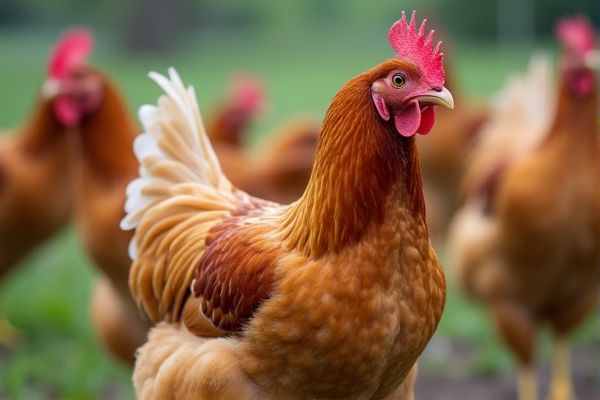
AI technology optimizes poultry farming by enhancing production efficiency and improving animal welfare. Smart sensors monitor flock health and behavior, detecting issues like disease or stress early on. Machine learning algorithms analyze data on feed consumption and growth rates, allowing for precise adjustments in diet and living conditions. Predictive analytics can forecast market demands, enabling farmers to make informed decisions about production levels and resource allocation.
AI usage in poultry farming
Predictive Analytics
AI usage in poultry farming can enhance productivity through predictive analytics. By analyzing data from previous farming cycles, farmers can forecast growth rates and optimize feeding practices. Institutions like the University of Arkansas have studied these techniques, showing significant potential for reducing costs and increasing egg production. This approach may lead to healthier flocks and improved overall farm efficiency.
Disease Detection
AI can enhance disease detection in poultry farming by analyzing data from sensors and imaging technologies. Machine learning algorithms can identify patterns signaling health issues, which may lead to quicker interventions and reduced mortality rates. For example, using AI-driven systems, farms like Aviagen can improve flock management and productivity. This potential efficiency can translate into cost savings and greater overall yield for poultry producers.
Monitoring Systems
AI usage in poultry farming can enhance productivity through advanced monitoring systems. These systems analyze parameters such as temperature, humidity, and feed intake, providing real-time data for optimal management. For instance, integrating AI with IoT devices can lead to improved health monitoring of flocks. Potential advantages include reduced mortality rates and increased egg production, pointing to a significant chance for profitability.
Feed Optimization
AI can significantly enhance feed optimization in poultry farming by analyzing consumption patterns and adjusting rations. This technology can help farms like Tyson Foods maximize nutrient efficiency while reducing waste. With precise data tracking, poultry producers can potentially lower costs associated with feed, improving profit margins. Implementing AI solutions may also result in healthier birds and better overall productivity.
Autonomous Equipment
AI usage in poultry farming can enhance efficiency and productivity through automated monitoring systems that track bird health and optimize feeding schedules. Autonomous equipment, such as robotic feeders and egg collectors, reduces labor costs and minimizes human error. Implementing machine learning algorithms can predict disease outbreaks, allowing for timely interventions. The potential for increased yield and better resource management presents significant advantages for poultry producers.
Genetic Planning
AI usage in poultry farming can enhance genetic planning, leading to improved breed selection and production efficiency. By analyzing genetic data, farmers can identify traits that contribute to better growth rates and disease resistance. For instance, institutions like Purdue University have been exploring AI algorithms to optimize breeding strategies. The potential for increased yield and reduced mortality rates presents significant advantages for poultry farmers.
Environmental Control
AI can optimize environmental control systems in poultry farming by analyzing temperature, humidity, and airflow data in real time. By implementing AI algorithms, farms can potentially reduce energy costs while maintaining optimal conditions for bird health. For instance, a study by the University of Arkansas highlighted the effectiveness of AI in moderating ventilation systems, leading to improved bird performance and reduced mortality rates. This technological integration offers the chance for enhanced productivity and sustainability in poultry operations.
Supply Chain Management
AI in poultry farming has the potential to enhance flock health monitoring by analyzing data from sensors and cameras, which can lead to better disease management. By integrating AI into Supply Chain Management, poultry producers can optimize feed distribution and reduce waste, improving overall efficiency. Predictive analytics allows for better demand forecasting, ensuring that inventories are aligned with market needs. An example of this is a poultry producer utilizing AI tools to streamline operations, resulting in lower costs and improved profit margins.
Resource Efficiency
AI technology can enhance resource efficiency in poultry farming by optimizing feed management and improving health monitoring. By using data analytics, farmers can predict the nutritional needs of flocks, potentially reducing waste. Systems like the Smart Farm Network allow for real-time insights into bird behavior and environmental conditions. Effective data utilization may lead to healthier birds and lower operational costs.
Welfare Monitoring
AI usage in poultry farming can enhance welfare monitoring by providing real-time data on bird health and behavior. By analyzing factors such as temperature, humidity, and activity levels, farmers can identify stress or illness early. For instance, institutions like Purdue University have explored AI applications to improve livestock management. This technology may lead to improved production efficiency and animal well-being over time.
 techknowy.com
techknowy.com